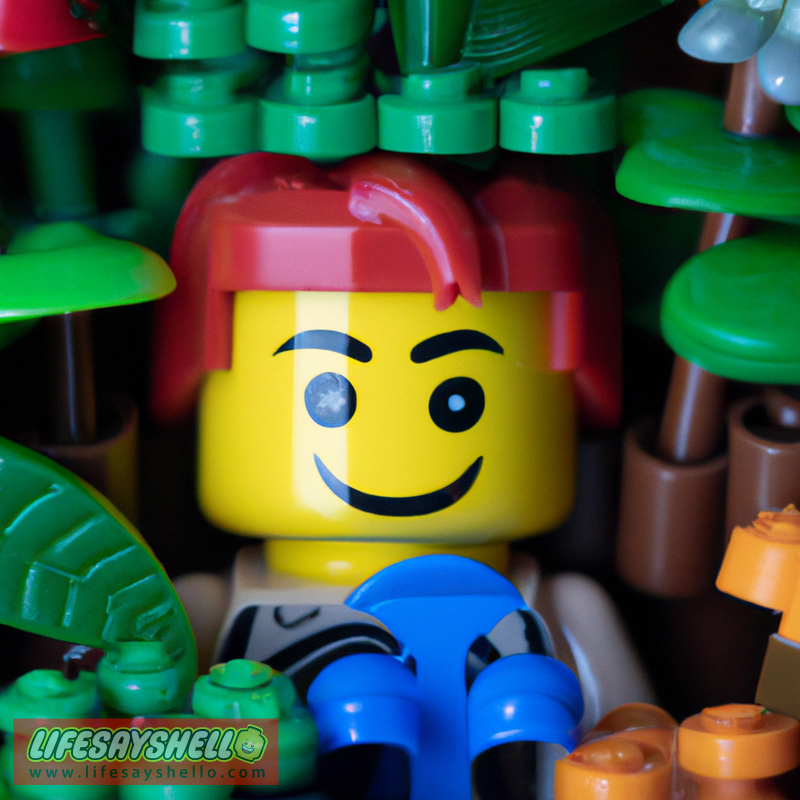The Buzz on Bees: Why These Tiny Creatures Are So Vital

Have you ever taken a bite of a juicy apple or sweet blueberry and thought about how it came to grow on that tree or bush? Behind many of the fruits, vegetables, seeds, and nuts we love are the humble honeybee – a small but mighty pollinator that supports our food supply, ecosystems, and economy.
Bees play an integral role in the production of around one-third of the food that we eat. From broccoli and carrots to almonds and apples, bees pollinate many of our favorite crops. In fact, the services provided by bees are valued at an estimated $15 billion in the U.S. alone when it comes to increased agricultural productivity.
However, bees have been disappearing at alarming rates over the past couple of decades. This is an extremely worrisome trend, as our food security and environment depend heavily on bees and other pollinators. It’s important we understand why bees are so critical, as well as how we can help protect them.
Why Are Bees So Important?
When you think about bees, you probably think about honey and bee stings. But these busy insects do so much more than produce honey! Here are some of the main reasons bees are essential:
Bees Are Super Pollinators
Bees play a crucial role in pollinating plants and supporting biodiversity. As bees fly from flower to flower gathering nectar and pollen, pollen grains stick to their fuzzy bodies and are transferred from one blossom to another. This cross-pollination is necessary for fertilization and reproduction in many plant species.
Bees pollinate over 100 different agricultural crops in the U.S., including fruits, vegetables, tree nuts, and field crops. Some of the foods we can thank bees for include:
Fruits: Apples, avocados, blueberries, cranberries, cherries, kiwi, mangoes, peaches, pears, plums, strawberries, watermelon
Vegetables: Broccoli, carrots, cauliflower, celery, cucumbers, onions, squash, tomatoes
Nuts and seeds: Almonds, cashews, sunflower seeds
Field crops: Canola, cotton, soybeans
Without bees to spread pollen, many plants would produce significantly less fruit or even fail to reproduce at all. Experts estimate that 1 out of every 3 bites of food we eat exists because of pollinators like bees.
In addition to food crops, bees pollinate wild plants like trees, flowers, and grasses. These plants form the foundation of ecosystems that countless birds, mammals, and insects rely on for food and shelter. Over 437 bee species have been identified that pollinate Pennsylvania’s natural areas, gardens, and farms.
Bees Produce Valuable “Bee Products”
Honeybees provide us with honey, beeswax, royal jelly, propolis, and pollen. Not only do these products taste great, but they also have a number of health and medicinal benefits.
Honey has antibacterial, anti-inflammatory, and antioxidant properties. It has been used since ancient times to treat wounds, respiratory infections, gastrointestinal problems, and more. The beeswax from honeycombs can be used to make candles, lip balm, skin creams, and protective coatings.
Royal jelly is a nutritious secretion produced by worker bees that is fed to larval bees. It contains compounds like vitamins, minerals, proteins and antioxidants. Royal jelly has been studied for its potential effects on fertility, immunity, lifespan, and more.
Propolis is a resinous material bees use to patch holes in their hives. It has natural antibiotic, antifungal, and antiviral properties. Humans use propolis supplements and extracts to boost immune function and treat conditions like cold sores.
Finally, pollen serves as the sole protein source for bees. The pollen bees bring back to their hives is collected by beekeepers and sold as a health supplement due to its high nutrient content.
For centuries, beekeepers have used smoke to calm bees when harvesting honey and other bee products from hives. Today, apiculture provides income for many beekeepers, particularly in rural communities. Some estimates value the honey bee’s economic contribution at $15 billion annually in the U.S.
Bees Are Key to Ecosystem Health
Honeybees play an integral role in our ecosystem. As prolific pollinators, bees support biodiversity by dispersing pollen and helping numerous plant species reproduce. These plants in turn provide food and shelter that sustain wildlife up and down the food chain.
For example, bees pollinate wildflowers like coneflowers, sunflowers, and milkweed. These flowering plants provide nectar that nourishes butterflies, hummingbirds, and other pollinators. The diverse nectar sources also benefit insect-eating birds like chickadees.
Seeds and nuts from bee-pollinated plants give squirrels, deer, bears, and other mammals the energy they need to survive. Apple tree blossoms pollinated by bees produce fruit that feeds songbirds like robins, waxwings, and orioles.
By pollinating such a wide variety of plants, honeybees help create a healthy habitat full of interconnected food webs. Their services help to shelter wildlife and prevent topsoil erosion. At least 437 bee species have been identified that keep Pennsylvania’s natural areas and agricultural lands lush and productive.
Bees Contribute Significantly to the Economy
The economic impact of honey bees is estimated to be a whopping $15 billion in added crop value each year. When you consider the total value of honey, beeswax and other bee products on top of that, the agricultural benefit of honey bees is likely 10-20 times greater than the value of the honey produced.
Honey bees are often transported around the country by commercial beekeepers to pollinate agricultural crops during bloom periods. California’s almond industry alone requires over 1 million bee colonies to pollinate their orchards every spring.
Many fruits, vegetables and nuts—including almonds, blueberries, cherries, and squash—are 90% dependent on honey bee pollination. Without the efficient pollination performed by managed honey bees, farmers would suffer major losses in yields and profits.
In a world without bees, food would become much scarcer and more expensive. We depend on these pollinators to produce affordable, nutritious food. Consumers and food companies rely on bees just as much as farmers do.
Threats Facing Bees
It’s clear that bees play an irreplaceable role in agriculture, nature, and the economy. Unfortunately, bee populations have been declining rapidly since the mid 20th century.
The number of managed honey bee colonies dropped from 6 million in 1947 to just 2.5 million in 2014. A similar crisis is happening with thousands of native bee species, including bumblebees.
Scientists have dubbed the widespread disappearance of bees “colony collapse disorder.” This troubling phenomenon is likely caused by a combination of factors, including:
Habitat loss and fragmentation as natural areas are converted to farmland or urban centers. Bees have fewer places to nest and access pollen/nectar.
Monocropping and intensive farming practices which shrink biodiversity and nutritional options for pollinators.
Pesticides and herbicides which accumulate in the environment, beeswax, and food stores. Neonicotinoids are especially harmful.
Climate change causing shifts in seasonal conditions and plant locations that disrupt natural bee cycles.
Diseases, parasites and predators which spread more easily to managed hives and decimate wild bee populations. The varroa mite is a major threat.
Increased electromagnetic radiation from cellular networks which interferes with bees’ navigation abilities and health.
The disappearance of bees will have resounding ecological and financial impacts. Experts estimate that losing managed honey bees would cost the U.S. economy $15 billion per year. Wild, native bees also provide valuable pollination services we cannot afford to lose.
If current trends continue, our food supply, economy, and ecosystem are in real jeopardy. We need bees. The next section covers ways we can help protect these important pollinators.
Protecting Bees for the Future
The threats facing bees underscore how vital it is to protect their populations and create healthy habitats. Here are some ways you can help bees thrive:
Plant native flowers, trees, shrubs, and grasses that provide nutritious pollen and nectar. Milkweed, coneflowers, and clovers are great choices. Avoid exotic flowers with little nutritional value.
Supply clean water sources like fountains, ponds, or small dishes filled with water and stones.
Leave dead trees, fallen branches, and leaf litter which provide nesting sites for wild bees.
Avoid or limit pesticide use in your garden, yard, or agricultural fields. Seek organic alternatives when possible.
Shop organic and local to reduce your support for industrial farms that harm bees.
Buy raw, unfiltered honey from local beekeepers. This provides income and incentive to maintain healthy hives.
Contact lawmakers to advocate for policies that protect pollinators. Support initiatives helping farmers transition to more sustainable practices.
Spread awareness about the importance of bees and their plight. Educate children and get them excited about pollinators.
Build bee houses to foster nesting colonies. You can get creative with hollow tubes, wood blocks with holes, and other DIY bee abodes.
Every small action to make our communities more bee-friendly adds up. Follow these tips to do your part in supporting our precious pollinators. We need bees just as much as they need us!
The Takeaway
Bees play a truly invaluable role in agriculture, nature, and our economy. As prolific pollinators, they enable many plants to reproduce and bear the fruits, vegetables, and seeds we depend on for food. Bees also produce honey, beeswax, and other beneficial products.
However, due to habitat loss, pesticides, climate change, and disease, bee populations are disappearing at an alarming rate. This puts our food supply, ecosystems, and businesses at risk. Protecting bees must become a top priority before it’s too late.
You can help bees flourish by planting pollinator-friendly gardens, avoiding pesticide use, buying from local farmers, and spreading awareness. Together, our small actions can make a big difference for bees and the future of our food. Let’s show bees some love!




Comments